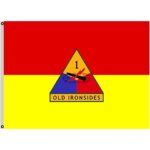
I. Introduction to Dirt Bike Wheeling
A. Definition of dirt bike wheeling
B. Importance of learning how to wheel a dirt bike
II. Preparing Your Dirt Bike for Wheeling
A. Necessary equipment and modifications
B. Checking tire pressure and condition
III. Basic Techniques for Dirt Bike Wheeling
A. Body position and balance
B. Clutch and throttle control
IV. Mastering the Wheelie Position
A. Front wheel lift techniques
B. Maintaining control during the wheelie
V. Common Mistakes and How to Avoid Them
A. Over-revving the engine
B. Poor body position
VI. Advanced Wheelie Techniques
A. Coasting wheelies
B. Circle wheelies
VII. Safety Precautions and Conclusion
A. Wearing proper safety gear
B. Riding in controlled environments
C. Continual practice and improvement.
I. Introduction to Dirt Bike Wheeling
If you’re a dirt bike enthusiast, you’ve probably heard of the term “dirt bike wheeling.” Dirt bike wheeling is the act of lifting the front wheel of a dirt bike off the ground while maintaining control and balance. It’s a thrilling and impressive maneuver that requires skill, practice, and control. In this section, we’ll explore what dirt bike wheeling is and why it’s essential to learn how to do it.
A. Definition of Dirt Bike Wheeling
Dirt bike wheeling is a technique where the rider lifts the front wheel of the bike off the ground while the back wheel remains in contact with the surface. The rider maintains control of the bike, balancing it on the back wheel and maneuvering it using the throttle, clutch, and body position. Dirt bike wheeling is a popular technique in motocross, enduro, and trail riding, where it can help riders navigate obstacles, climb hills, and add style to their riding.
B. Importance of Learning How to Wheel a Dirt Bike
Learning how to wheel a dirt bike can significantly improve your riding skills and confidence. It’s an essential technique that can help you navigate difficult terrains and obstacles, increase your speed, and add style to your riding. Wheeling can also help you build a stronger connection with your bike and improve your overall control and balance.
Moreover, dirt bike wheeling can be a lot of fun! It’s a thrilling maneuver that can give you an adrenaline rush and a sense of accomplishment. Once you master the basics of dirt bike wheeling, you can move on to more advanced techniques and tricks, such as circle wheeling, switchback wheeling, and stoppies.
However, it’s important to note that dirt bike wheeling can be dangerous if not done correctly. It requires practice, control, and balance. Therefore, it’s crucial to learn the proper techniques and safety measures before attempting to wheel your dirt bike. In the following sections, we’ll explore the necessary equipment, modifications, and techniques for dirt bike wheeling, as well as common mistakes to avoid and safety precautions to take.
Preparing Your Dirt Bike for Wheeling
Before attempting to wheel your dirt bike, it’s essential to ensure that your bike is in good condition and equipped with the necessary modifications. Here are some tips for preparing your dirt bike for wheeling:
- Equipment and modifications: You’ll need a dirt bike with good power-to-weight ratio, a reliable clutch, and good suspension. You may also want to consider installing a rear brake pedal block or a kill switch for added safety. It’s also recommended to wear proper safety gear, including a helmet, gloves, boots, and protective clothing.
- Tire pressure and condition: Check your tire pressure and condition before each ride. Make sure your tires are inflated to the recommended pressure and are in good condition. Low tire pressure can make it more difficult to wheel your bike, while worn-out tires can reduce your control and balance.
By preparing your dirt bike and gear, you can ensure a safer and more enjoyable wheeling experience. In the next section, we’ll explore the basic techniques for dirt bike wheeling, including body position, clutch, and throttle control.
For more information on dirt bike wheeling and other riding techniques, check out these authoritative resources:
- Dirt Bike Planet – How to Wheelie a Dirt Bike
- Motocross Action Magazine – Basic Technique: How to Wheelie a Dirt Bike
- RevZilla – How to Wheelie Your Dirt Bike
These resources offer detailed instructions, tips, and safety measures for dirt bike wheeling, as well as other riding techniques and advice for dirt bike enthusiasts.
II. Preparing Your Dirt Bike for Wheeling
=============================================
Before you even think about pulling off an epic wheelie, it’s crucial to ensure that your dirt bike is in tip-top shape and properly set up for the task at hand. In this section, we’ll go over the necessary equipment and modifications, as well as how to properly check your tire pressure and condition.
**A. Necessary equipment and modifications**
First things first, let’s talk about the must-have equipment for dirt bike wheeling. While it’s possible to perform wheelies on a stock bike, certain modifications can make the process easier and more manageable. These modifications include:
1. **Exhaust system:** A performance exhaust system can help increase power and give you the extra oomph you need to pop the front wheel off the ground.
2. **Clutch:** A heavy-duty clutch can handle the extra stress that comes with wheeling and can help improve your control over the bike.
3. **Wheels and tires:** A lighter wheelset and high-quality tires with good traction can make it easier to lift the front wheel and maintain control during the wheelie.
4. **Sprockets:** Changing your sprocket size can help adjust your bike’s gear ratio, making it easier to wheelie.
It’s important to note that these modifications should only be done by a professional, and you should always make sure that any modifications you make are legal and comply with local regulations.
**B. Checking tire pressure and condition**
Proper tire pressure and condition are crucial for a successful wheelie. Before you hit the trails, make sure to check the tire pressure and adjust it according to the manufacturer’s recommendations. A tire that is either under or overinflated can affect your bike’s handling and make it more difficult to wheelie.
Additionally, make sure to inspect the condition of your tires before each ride. Check for any signs of wear, such as bald spots or cracks, and replace the tires if necessary. A tire in poor condition can compromise your safety and make it more difficult to control the bike during a wheelie.
When it comes to dirt bike wheeling, proper preparation is key. By ensuring that your bike is equipped with the necessary modifications and that your tires are in good condition, you’ll be setting yourself up for success and increasing your chances of pulling off the perfect wheelie.
**Pro Tip:** Consider taking a dirt bike maintenance course or consulting with a professional mechanic to ensure that your bike is properly set up for wheeling. This can not only improve your performance but also help prevent any potential mechanical issues that could arise during your ride.
**Common Mistake:** Forgetting to check tire pressure and condition before a ride. This can lead to poor handling and decreased control during a wheelie, increasing the risk of an accident.
**Safety Precaution:** Always wear proper safety gear, including a helmet, gloves, and protective clothing, when performing wheelies. This can help protect you in the event of a crash and reduce the risk of injury.
Conclusion
Preparing your dirt bike for wheeling is an essential step in mastering this impressive trick. By ensuring that your bike is equipped with the necessary modifications and that your tires are in good condition, you’ll be setting yourself up for success and increasing your chances of pulling off the perfect wheelie. Remember, safety should always be your top priority, so make sure to wear proper safety gear and practice in a controlled environment. With the right preparation and practice, you’ll be well on your way to becoming a dirt bike wheeling pro!
III. Basic Techniques for Dirt Bike Wheeling
So, you’re ready to learn how to wheelie your dirt bike? Great! Before we get started, let’s cover some basic techniques that will help you get the front wheel off the ground and maintain control.
A. Body position and balance
The first thing to keep in mind when attempting a wheelie is your body position and balance. You’ll want to sit towards the back of the seat, keeping your weight over the rear wheel. This will help you lift the front wheel and maintain control during the wheelie.
As you begin to lift the front wheel, you’ll want to lean your body forward slightly. This will help keep the bike balanced and prevent it from flipping over backwards. Keep your knees and elbows slightly bent to absorb any bumps or movement in the terrain.
B. Clutch and throttle control
The clutch and throttle are the two most important controls when it comes to wheelies. To get the front wheel off the ground, you’ll need to quickly release the clutch while simultaneously giving the bike a burst of throttle. This will cause the rear wheel to spin faster than the front, lifting the front wheel off the ground.
Once the front wheel is in the air, you’ll need to maintain a steady throttle and clutch control to keep it there. Too much throttle and the bike will become uncontrollable, too little and the front wheel will drop back to the ground.
To practice clutch and throttle control, start by finding a flat, open area. Begin by riding slowly and practice popping the front wheel off the ground using the clutch and throttle. As you become more comfortable, gradually increase your speed and the height of the wheelie.
Mastering the wheelie position
Now that you have the basic techniques down, it’s time to focus on mastering the wheelie position. There are a few different techniques you can use to lift the front wheel, but the most common is the “power wheelie.”
A. Front wheel lift techniques
To perform a power wheelie, start by riding at a moderate speed in a low gear. As you approach the spot where you want to start the wheelie, quickly release the clutch while giving the bike a burst of throttle. This will cause the rear wheel to spin faster than the front, lifting the front wheel off the ground.
As the front wheel begins to lift, use your body weight to help balance the bike. Lean your body forward slightly, keeping your knees and elbows bent to absorb any bumps or movement in the terrain.
B. Maintaining control during the wheelie
Once the front wheel is in the air, it’s important to maintain control. Keep a steady throttle and use the clutch to regulate the bike’s speed. If the front wheel begins to drop, give the bike a little more throttle to lift it back up.
If the bike becomes uncontrollable, don’t panic. Instead, use the clutch to slow the bike down and bring the front wheel back to the ground. It’s important to practice these skills in a controlled environment until you become comfortable and confident in your ability to maintain control during a wheelie.
Common mistakes and how to avoid them
When it comes to wheelies, there are a few common mistakes that beginners often make. Here are a few of the most common mistakes and how to avoid them:
* Over-revving the engine: When attempting a wheelie, it’s important to use the clutch and throttle in combination. Over-revving the engine can cause the bike to become uncontrollable, increasing the risk of an accident.
* Poor body position: Maintaining the correct body position is crucial when it comes to wheelies. Sitting too far forward or too far back can make it difficult to lift the front wheel and maintain control.
* Poor clutch and throttle control: The clutch and throttle are the two most important controls when it comes to wheelies. Poor control can cause the bike to become unstable, increasing the risk of an accident.
To avoid these common mistakes, it’s important to practice in a controlled environment and focus on mastering the basic techniques. Start by practicing at slow speeds and gradually increase your speed as you become more comfortable and confident.
Conclusion
Dirt bike wheeling can be a thrilling and challenging skill to learn. By mastering the basic techniques and focusing on maintaining control, you’ll be able to lift the front wheel with confidence and style. Just remember to always wear proper safety gear, practice in a controlled environment, and continually strive for improvement. Happy wheeling!
Body position and balance
The first thing to keep in mind when attempting a wheelie is your body position and balance. You’ll want to sit towards the back of the seat, keeping your weight over the rear wheel. This will help you lift the front wheel and maintain control during the wheelie.
As you begin to lift the front wheel, you’ll want to lean your body forward slightly. This will help keep the bike balanced and prevent it from flipping over backwards. Keep your knees and elbows slightly bent to absorb any bumps or movement in the terrain.
Clutch and throttle control
The clutch and throttle are the two most important controls when it comes to wheelies. To get the front wheel off the ground, you’ll need to quickly release the clutch while simultaneously giving the bike a burst of throttle. This will cause the rear wheel to spin faster than the front, lifting the front wheel off the ground.
Once the front wheel is in the air, you’ll need to maintain a steady throttle and clutch control to keep it there. Too much throttle and the bike will become uncontrollable, too little and the front wheel will drop back to the ground.
Mastering the wheelie position
Now that you have the basic techniques down, it’s time to focus on mastering the wheelie position. There are a few different techniques you can use to lift the front wheel, but the most common is the “power wheelie.”
Front wheel lift techniques
To perform a power wheelie, start by riding at a moderate speed in a low gear. As you approach the spot where you want to start the wheelie, quickly release the clutch while giving the bike a burst of throttle. This will cause the rear wheel to spin faster than the front, lifting the front wheel off the ground.
As the front wheel begins to lift, use your body weight to help balance the bike. Lean your body forward slightly, keeping your knees and elbows bent to absorb any bumps or movement in the terrain.
Maintaining control during the wheelie
Once the front wheel is in the air, it’s important to maintain control. Keep a steady throttle and use the clutch to regulate the bike’s speed. If the front wheel begins to drop, give the bike a little more throttle to lift it back up.
If the bike becomes uncontrollable, don’t panic. Instead, use the clutch to slow the bike down and bring the front wheel back to the ground. It’s important to practice these skills in a controlled environment until you become comfortable and confident in your ability to maintain control during a wheelie.
Common mistakes and how to avoid them
When it comes to wheelies, there are a few common mistakes that beginners often make. Here are a few of the most common mistakes and how to avoid them:
- Over-revving the engine: When attempting a wheelie, it’s important to use the clutch and throttle in combination. Over-revving the engine can cause the bike to become uncontrollable, increasing the risk of an accident.
- Poor body position: Maintaining the correct body position is crucial when it comes to wheelies. Sitting too far forward or too far back can make it difficult to lift the front wheel and maintain control.
- Poor clutch and throttle control: The clutch and throttle are the two most important controls when it comes to wheelies. Poor control can cause the bike to become unstable, increasing the risk of an accident.
To avoid these common mistakes, it’s important to practice in a controlled environment and focus on mastering the basic techniques. Start by practicing at slow speeds and gradually increase your speed as you become more comfortable and confident.
Conclusion
Dirt bike wheeling can be a thrilling and challenging skill to learn. By mastering the basic techniques and focusing on maintaining control, you’ll be able to lift the front wheel with confidence and style. Just remember to always wear proper safety gear, practice in a controlled environment, and continually strive for improvement. Happy wheeling!
**IV. Mastering the Wheelie Position**
Now that you have the basics down, it’s time to focus on mastering the wheelie position. This is where the real fun begins, and where you’ll start to feel like a true dirt bike wheelie master.
A. Front Wheel Lift Techniques
There are a few different techniques you can use to lift the front wheel of your dirt bike, but the most common and beginner-friendly method is called the “clutch kick.” Here’s how it works:
1. Start in second gear and approach a slow, steady speed.
2. As you reach the speed you want to lift the front wheel, quickly snap the clutch lever with your left hand.
3. At the same time, apply a quick burst of throttle with your right hand.
4. The front wheel should lift off the ground, and you can then use the throttle to maintain the wheelie.
It may take some practice to get the timing and technique down, but once you do, it will become second nature.
B. Maintaining Control During the Wheelie
Once you’ve lifted the front wheel off the ground, the key to maintaining control is to use your body weight and balance to keep the bike upright. Here are some tips to help you out:
- Keep your weight over the back wheel: This will help to keep the bike balanced and prevent the front wheel from dropping too quickly.
- Use your legs as a counterbalance: By pushing your legs out to the sides, you can help to keep the bike stable and prevent it from tipping over.
- Maintain a smooth throttle: A steady, consistent throttle will help to keep the bike at a consistent height and make it easier to control.
- Look ahead, not down: Keeping your gaze fixed on a point in the distance will help to keep the bike going straight and prevent it from veering off course.
By following these tips, you’ll be able to maintain control during the wheelie and keep the bike balanced and upright.
It’s important to note that mastering the wheelie position takes time and practice. Don’t be discouraged if you don’t get it right away – keep practicing and you’ll get there. And remember, always wear proper safety gear and ride in controlled environments to minimize the risk of injury.
With these tips in mind, you’re well on your way to mastering the wheelie position on your dirt bike. So get out there and start practicing! The world of dirt bike wheelies is waiting for you.
V. Common Mistakes and How to Avoid Them
So, you’ve got the basics of dirt bike wheeling down, but you’re still experiencing some issues. Don’t worry – even the most experienced riders have been there. Let’s take a look at some common mistakes and how to avoid them to help you perfect your wheelie technique.
A. Over-revving the Engine
When learning to wheelie, it’s tempting to twist the throttle as hard as you can to get the front wheel off the ground. However, this can lead to a lack of control and an over-revved engine, causing the bike to jump or buck unexpectedly. Instead, focus on gradually increasing the throttle and using your clutch control to lift the front wheel.
B. Poor Body Position
Another common mistake is poor body position. It’s crucial to maintain a strong, balanced stance while wheeling. Keep your weight centered over the bike, with your knees and elbows slightly bent. Avoid leaning too far forward or backward, as this can cause you to lose control. Additionally, keep your eyes focused on where you want to go, not on the front wheel or ground.
1. Keep your weight centered
To maintain a centered weight while wheeling, imagine there’s a string attached to the top of your helmet, pulling you upward. This will help you avoid leaning too far forward or backward and keep your balance.
2. Bend your knees and elbows
Bending your knees and elbows while wheeling not only helps with balance but also absorbs any shocks or vibrations from the bike. This will give you a smoother, more controlled ride.
3. Look ahead, not down
Always keep your eyes focused on where you want to go, not on the front wheel or ground. This will help you maintain a straight line and avoid any obstacles in your path.
VI. Advanced Wheelie Techniques
Now that you’ve mastered the basics and learned how to avoid common mistakes, let’s explore some advanced wheelie techniques to take your skills to the next level.
A. Coasting Wheelies
A coasting wheelie is when you lift the front wheel without using the throttle. This technique requires precise clutch control and balance. Start by riding at a slow to moderate speed, then quickly release the clutch while simultaneously pulling in the clutch lever. This will cause the engine to slow down, lifting the front wheel off the ground.
B. Circle Wheelies
Circle wheelies, also known as “power wheelies,” involve making a complete circle while keeping the front wheel in the air. To perform a circle wheelie, start by doing a regular wheelie. Once you’ve gained some momentum, use your body weight and handlebar movements to steer the bike in a circular motion. Be sure to maintain a consistent throttle and clutch control throughout the maneuver.
VII. Safety Precautions and Conclusion
Before attempting any advanced wheelie techniques, make sure you’ve mastered the basics and are wearing proper safety gear. This includes a helmet, gloves, boots, and protective clothing. Always ride in controlled environments, such as an off-road park or a designated riding area. And, as with any new skill, practice makes perfect. Continually challenge yourself to improve, but always prioritize safety over speed.
With these tips and techniques, you’ll be well on your way to mastering dirt bike wheeling and impressing your fellow riders. Happy riding!
VI. Advanced Wheelie Techniques
A. Coasting Wheelies
Once you’ve mastered the basics of dirt bike wheeling, it’s time to move on to more advanced techniques. One such technique is the coasting wheelie. As the name suggests, a coasting wheelie involves lifting the front wheel while coasting, rather than using the throttle to power the bike. This technique requires precise timing and balance, but it allows for a smoother and more controlled wheelie.
To perform a coasting wheelie, start by gaining some speed and then quickly chop the throttle. At the same time, pull in the clutch and use your body weight to shift your center of gravity backwards. As the bike slows down, the front wheel will begin to lift. Once the front wheel is off the ground, you can gradually release the clutch and use the engine’s compression to maintain the wheelie. Remember to keep your body weight centered over the bike and to maintain a smooth, steady balance.
B. Circle Wheelies
Another advanced wheelie technique is the circle wheelie. This technique involves riding in a circle while performing a wheelie, and it requires a high level of skill and control. To perform a circle wheelie, start by performing a regular wheelie. Once you’re comfortable with the wheelie, use your body weight and handlebars to slowly begin turning in a circle. As you turn, use the throttle to maintain your speed and balance, and continue to adjust your body position to keep the bike upright.
It’s important to note that circle wheelies can be dangerous, as they require a significant amount of balance and control. Before attempting a circle wheelie, make sure you’re comfortable with the basics of dirt bike wheeling and that you’re riding in a controlled environment where you can practice safely.
Tips for Advanced Wheelie Techniques
- Practice in a controlled environment, such as a dirt bike track or an open field.
- Start with small movements and gradually build up to larger ones as you become more comfortable.
- Keep your body weight centered over the bike and maintain a smooth, steady balance.
- Use the throttle and clutch to maintain control and adjust your speed as needed.
- Wear proper safety gear, including a helmet, gloves, and protective clothing.
Conclusion
Dirt bike wheeling is a challenging but rewarding skill that can add a new level of excitement to your off-road adventures. By mastering the basics and practicing advanced techniques like coasting and circle wheelies, you can become a more confident and skilled rider. Just remember to always prioritize safety and to practice in a controlled environment. With patience, practice, and the right techniques, you’ll be wheeling like a pro in no time!
VII. Safety Precautions and Conclusion
A. Wearing Proper Safety Gear
Whenever you’re riding a dirt bike, it’s crucial to wear the appropriate safety gear. This not only reduces the risk of injury during a crash but also helps protect you from potential harm while performing tricks like wheelies. Here’s a list of essential safety gear you should always have on:
- Helmet: A DOT-approved full-face helmet is a must to protect your head and face in case of an accident.
- Goggles: These keep dirt, debris, and bugs out of your eyes while riding, allowing you to maintain focus and visibility.
- Gloves: Gloves not only provide protection for your hands but also enhance your grip on the handlebars.
- Boots: Sturdy motocross boots shield your feet, ankles, and lower legs from impacts and abrasions.
- Body armor: A chest protector, knee guards, and elbow pads help absorb impacts and prevent injuries to these vulnerable areas.
- Long pants and long sleeves: These garments protect your skin from scratches, cuts, and sunburn.
B. Riding in Controlled Environments
Before attempting any wheelies, ensure you’re in a controlled environment where you can practice safely without endangering others or damaging property. Ideal locations include:
- Dirt bike tracks: Many motocross parks have designated areas for practicing tricks and jumps.
- Private property: If you have access to a large, open area like a field or a dirt lot, it can be a suitable place to practice.
- Motocross schools: Enrolling in a dirt bike school or workshop can provide you with expert guidance and a secure environment for learning wheelies.
C. Continual Practice and Improvement
Like any skill, mastering dirt bike wheelies takes time, patience, and practice. As you progress, gradually increase the difficulty and duration of your wheelies, always focusing on maintaining control and balance. Remember to take breaks and avoid pushing yourself too hard, as fatigue can lead to mistakes and injuries.
With consistent practice and the right safety measures in place, you’ll not only become proficient at dirt bike wheeling but also significantly improve your overall dirt bike riding skills. So gear up, find a safe space, and start practicing today!
Happy and safe riding!
Note: The information provided here is intended for informational purposes only and should not be considered professional advice. Always consult with a certified riding instructor or experienced rider before attempting new tricks or techniques on your dirt bike.










Comments